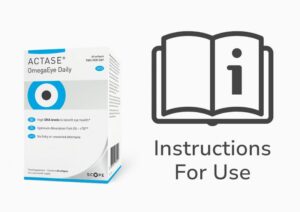With February behind us now, signs of spring are beginning to appear. The encouraging news from the vaccine roll out suggests that we can hope for an easing of restrictions in the not-too-distant future. For now however, working from home and masks will continue for a while longer.
Throughout this year many of us have swapped working in busy offices to working from home and as contact lens wearers we have enjoyed being out of an air-conditioned environment. Now that the temperature outside is much colder, many of us have given in to the central heating and once again we are subjecting our eyes to a dryer environment. And don’t forget about the continuing challenge of Mask Associated Dry Eye which will also have a drying effect on our contact lenses
As contact lens wearers we need to be mindful of the extra steps we need to think about to ensure comfort through the colder winter months due to these additional challenges
There are approximately 4.5 million contact lens wearers in the UK & Ireland who enjoy the benefits of not having to wear glasses all the time, but I wonder how many of us actually think about how a contact lens affects our tear film as it sits on the surface of our eyes.
The tear film is an incredibly complex structure in its own right. It is actually like no other fluid in the body and covers the surface of the eye at any given time. It must maintain the delicate balance between production and evaporation. The mechanisms and the complexity of the tear film never ceases to amaze me for a structure that is less than 1/10th of the thickness of a human hair. Research suggests that a contact lens sits within the tear film resulting in an even thinner covering of tears over the surface of the contact lens. This coupled with the challenges of dry and warm environments (and masks) can potentially play havoc with this equilibrium resulting in contact lens discomfort and reduced wearing times.
To overcome these challenges, I would recommend that we all take a few extra steps to maintain a health tear film. Firstly, remember to make sure our eyelids meet with every blink, this will allow a fresh layer of tears to coat the surface of the lens and prevent it feeling dry. Our blink rate significantly reduces with concentrated tasks such as looking at screens and even sometimes just reading a book or magazine, so it is really important not to forget this simple task.
Keeping hydrated is also important for a healthy tear film, it is much easier to drink water in the warmer weather and many of us default to a warming cup of tea or coffee in the colder weather which sadly isn’t as beneficial to our tears. Try and drink an extra glass of water if you can.
Sometimes, however the environmental challenges are too much to overcome, and our lenses begin to feel dry. Using a lubricating eye drop that is preservative free and compatible with contact lenses will maintain the tear volume and help prevent the lenses drying out. If you know you are going to be faced with a challenging situation e.g. wearing a mask, looking at a screen or working in an air conditioned environment for any amount of time, use lubricating drops throughout the day rather than waiting until your eyes start to feel dry. That way your contact lenses will feel comfortable for longer.
It is important to point out that if your contact lenses are regularly uncomfortable, if your eyes are red or your vision is affected you should seek advice from your practitioner.
Top tips for contact lens comfort.
- Always wash your hands before touching your eyes and contact lenses
- Make sure you have regular check-ups with your optometrist or contact lens optician
- Only wear your lenses for as long as has been recommended by your practitioner
- Never use tap water with your lenses
- Always apply make up after putting your lenses in
- Don’t bathe or go swimming in your lenses
- Remember to blink! Blinking is essential to maintain a healthy tear film. This is even more important if you are using a screen or wearing a mask
- Consider using an ocular lubricant such as OPTASE® Comfort Drop if you know your eyes are going to be in a challenging environment
- If in doubt, take them out and if you experience any signs of redness, pain or loss of vision – consult your optometrist or optician immediately for advice
More info about the do’s and don’t for safe contact lens wear can be found at the British Contact Lens Association website
Take care & stay safe
Mandy








